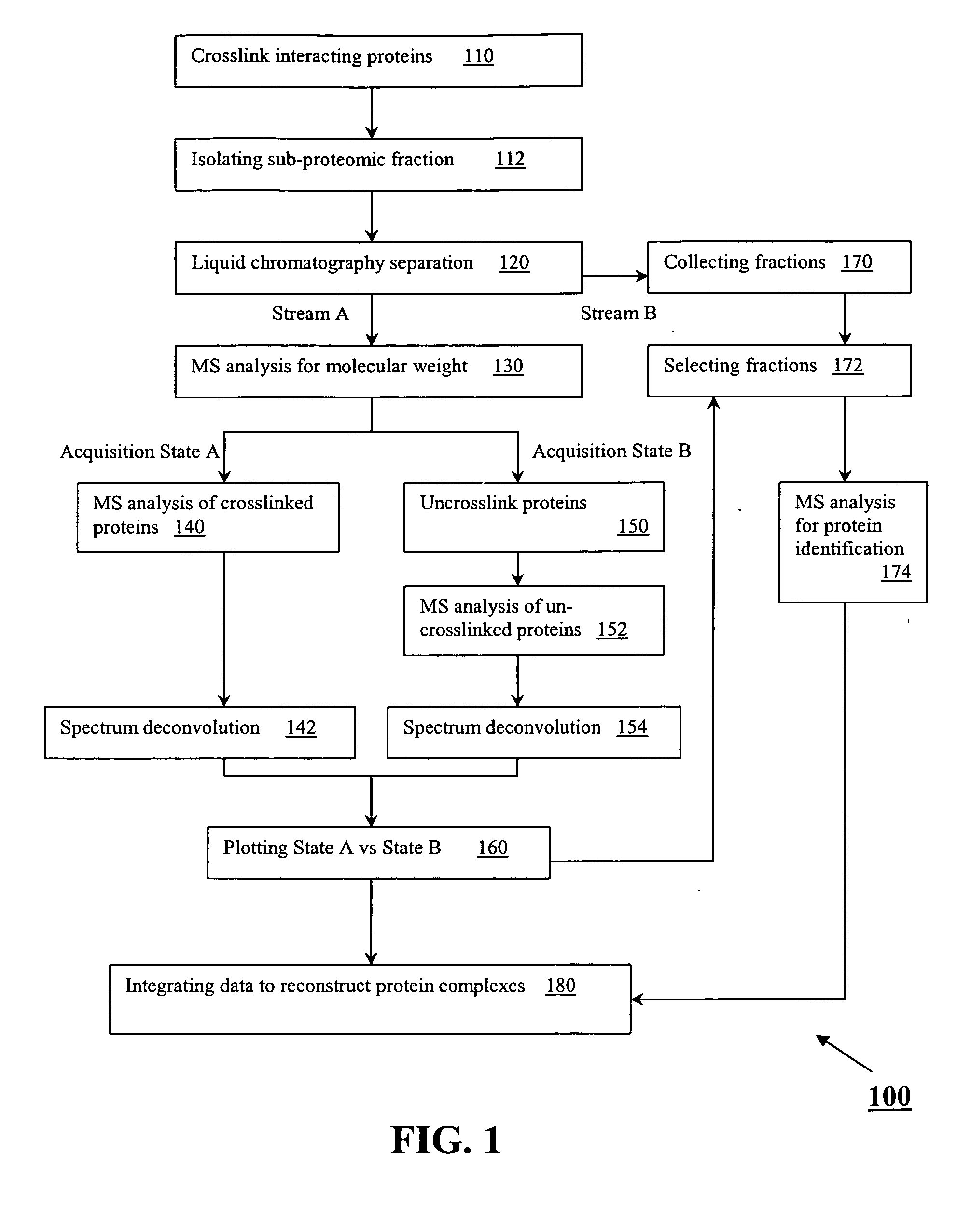Method and system for identification of protein-protein interaction
a protein and interaction technology, applied in the field of protein analysis methods, can solve the problems of low adoption rate, insufficient information produced directly from the electrophoresis experiment, and limited resolution of gel electrophoresis, and achieve the effect of high resolution separation of protein molecules
- Summary
- Abstract
- Description
- Claims
- Application Information
AI Technical Summary
Problems solved by technology
Method used
Image
Examples
Embodiment Construction
[0022]A method for the characterization of protein-protein interactions based on diagonal mass spectrometry analysis is provided. Initially proteomic samples containing interacting proteins are crosslinked either in vivo or in vitro. After a high resolution chromatographic separation, separated proteins and protein complexes are introduced directly into a mass spectrometer for determination of their molecular weights. During the data acquisition, the mass spectrometer alternates between two discrete acquisition states. In the first acquisition state, the crosslinked complexes are analyzed. In the second acquisition state, the crosslinking is cleaved and the mass spectra of the dissociated proteins are collected. Following the data acquisition, the raw mass spectral data is deconvoluted and reconstructed into a diagonal MS plot of crosslinked proteins vs. component proteins which can be interpreted to explore protein-protein interactions.
[0023]FIG. 1 shows an embodiment of the diagon...
PUM
| Property | Measurement | Unit |
|---|---|---|
| flow rate | aaaaa | aaaaa |
| flow rate | aaaaa | aaaaa |
| mass spectrometry | aaaaa | aaaaa |
Abstract
Description
Claims
Application Information
 Login to View More
Login to View More - R&D
- Intellectual Property
- Life Sciences
- Materials
- Tech Scout
- Unparalleled Data Quality
- Higher Quality Content
- 60% Fewer Hallucinations
Browse by: Latest US Patents, China's latest patents, Technical Efficacy Thesaurus, Application Domain, Technology Topic, Popular Technical Reports.
© 2025 PatSnap. All rights reserved.Legal|Privacy policy|Modern Slavery Act Transparency Statement|Sitemap|About US| Contact US: help@patsnap.com



